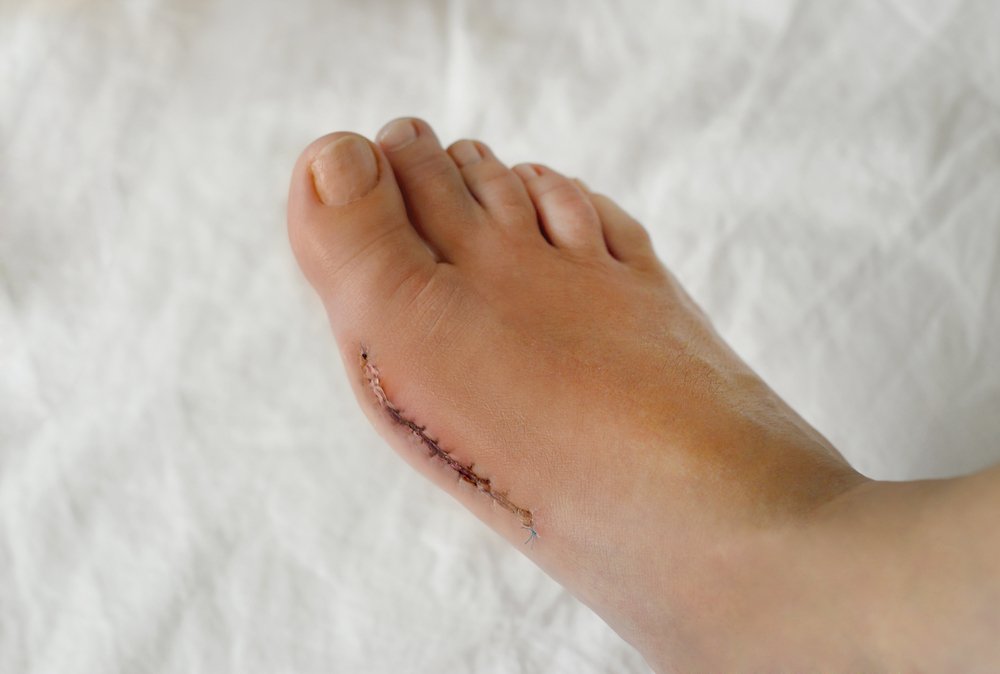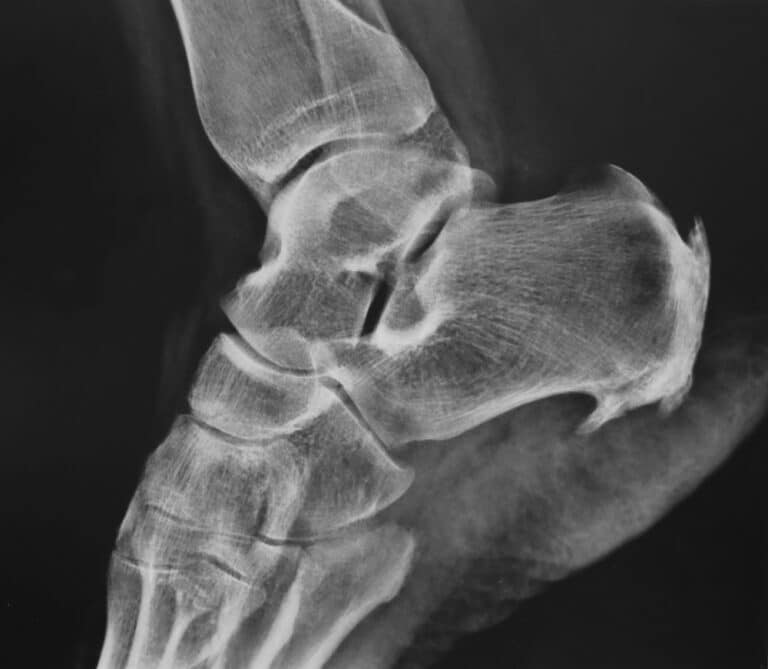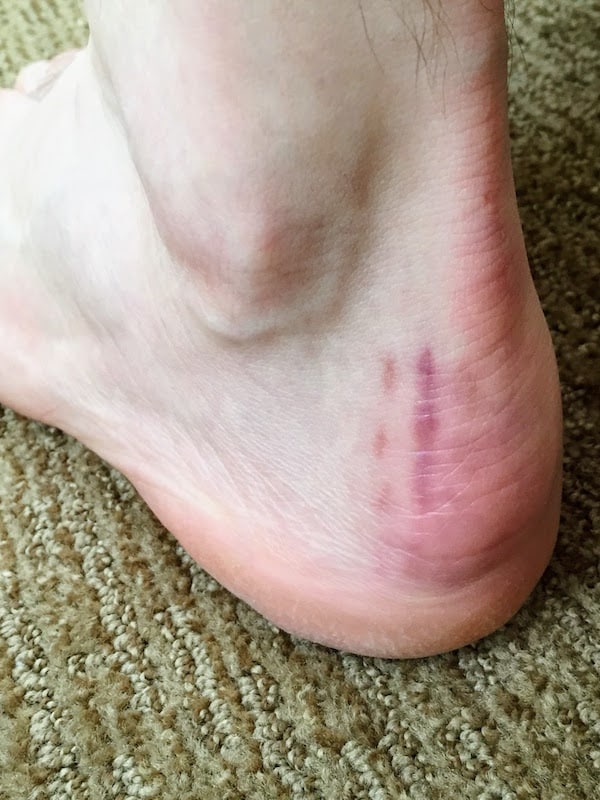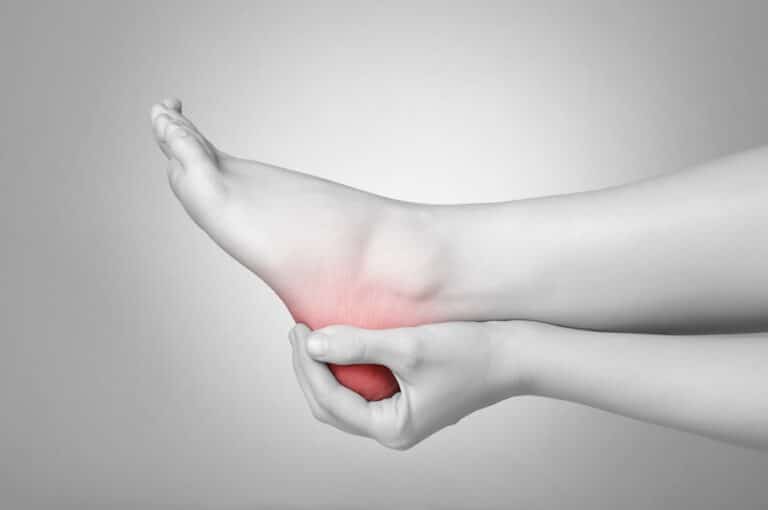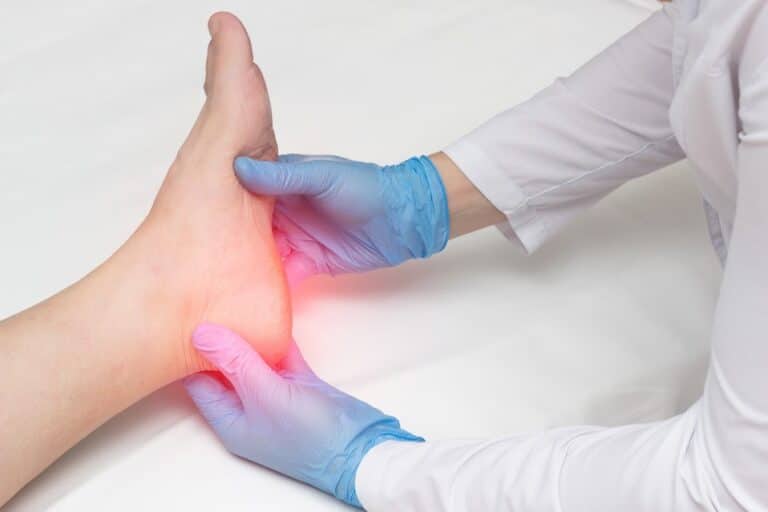It is not unusual for scar tissue to form after a medical procedure – it’s the natural way of your body healing. The question that many people have is how to break up scar tissue after bunion surgery. Is it possible to break it with physical therapy, or is there some other, more convenient way to do it? You can consult about this with your doctor and learn more information.
How to Break up Scar Tissue After Bunion Surgery With Some Physical Therapy?
Despite the fact that bunion surgery is only located in a small part of your foot, this medical procedure still does damage to your muscles alongside soft tissue. It is natural that, as a part of the recovery process, you learn how to walk without putting too much weight and pressure on your foot. It is also recommended that you rely on physical therapy because this can also help you break down scar tissue.
After surgery, scar tissue usually forms around incision areas. This tissue is hard, and it can sometimes even be painful or limit the range of your motion. This is why experienced physical therapists will use techniques for soft tissue mobilization in order to break down scar tissue and also prevent forming of new scar tissue. These techniques are known as manual therapy. During this therapy, physical therapists use their hands to help mobilize and manipulate the soft tissue. They use gentle movements which reduce pain and gradually improve your motion range which eventually leads to the breaking of scar tissue.
Stretching
It is crucial to understand how physical therapy and specific movements can affect and break down scar tissue. One of the movements your therapist is going to implement in your therapy process is stretching. With gentle stretches, a therapist will improve your limited flexibility and gradually break up scar tissue.
Soft Tissue Mobilization
Another therapy technique many therapists will use to help you solve this issue is soft tissue mobilization. With this technique, your therapist will be gently mobilizing and maneuvering the soft tissue of your foot into a proper position which will lead to the breaking of the scar tissue.
Myofascial Release
Myofascial release, or MFR, is known as one of the soft tissue mobilization techniques which were primarily used for breaking scar tissue in the soft tissue that’s under your skin. This technique is specific because it involves slow motions of gentle force, which is put to a targeted area and leads to the breaking up of the scar tissue.
Instrument-Assisted Soft Tissue Mobilization
Instrument-assisted soft tissue mobilization, or IASTM, is another form of soft tissue mobilization. The technique is related to the usage of stainless steel – ergonomic instruments are used in order to help your therapist rub down the site of your scar tissue. With this technique, breaking the directions of scar tissue is easier than with a hands-on approach. This method is used for hard tissue that can’t be broken with hands alone.
How to Break up Scar Tissue After Bunion Surgery With Some Home Remedies
If you want to treat your scar tissue at home, there are some techniques you can rely on, but they might not be as efficient as previously mentioned ones. One of the best methods for achieving your goals and breaking the scar tissue is to apply moisturizer regularly to your scar area. You should massage the moisturizer in the direction of the tissue. This way, the scar will get softer and more flexible – eventually, this will decrease tissue sensitivity.
Another technique you can rely on is the use of silicone gel patches. They are specially designed to help promote tissue healing. Using these patches and wrapping them around your wound will also decrease the pain, tension, and inflammation, so it’s definitely highly recommended to use them, even if you don’t have a severe form of scar tissue.
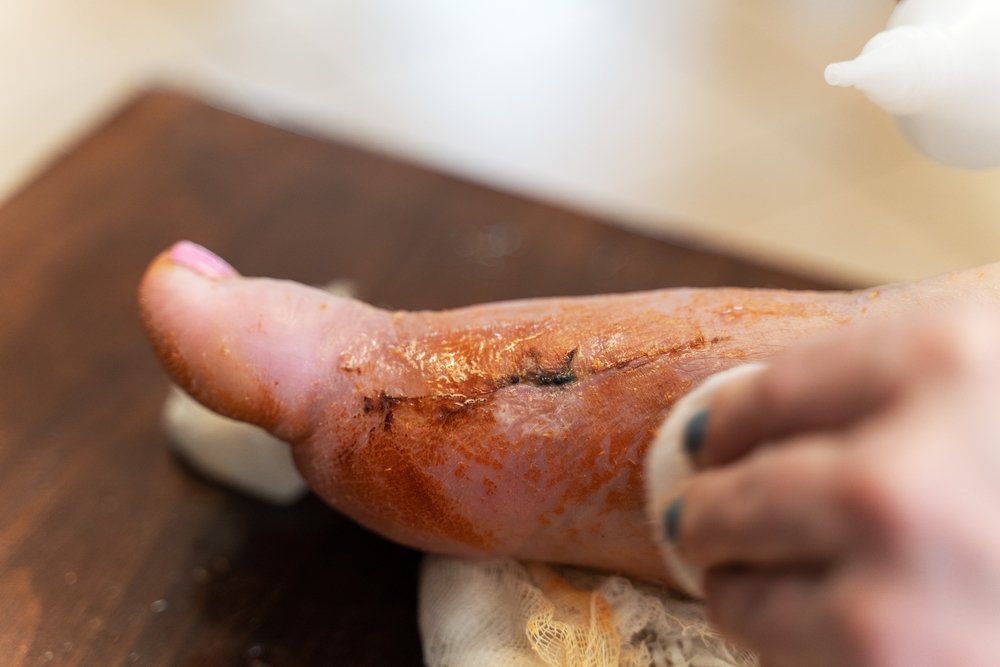
What Kind of Pain Are Scar Tissues Likely to Cause?
Scar tissues can cause different types of pain and discomfort. For some people, this can be tightness, difficulty with flexible movements, and itching. It is not unusual that some of these issues occur even years after the surgery because of the fact that scar tissue matures over time.
Consult With Your Surgeon About Scar Tissue
It is completely natural that scar tissue starts forming after the surgery, and this isn’t something that should worry you much, especially if you consult with an experienced professional and learn how to recognize it and treat it. There are several methods you can rely on if you want to ensure your scar tissue will get broken and you’ll lessen the pain and tightness. If you want to learn more about your specific case and which treatment method is recommended for you, contact us and book an appointment at LuxeFoot Surgery clinic. An appointment with a specialist will help you solve all of your dilemmas, and you’ll feel much more comfortable knowing that you’re using the right treatment to solve your problem.
FAQ
How Long Does Stiffness Last After Bunion Surgery?
After bunion surgery is over, it is normal that you feel stiffness for up to six weeks. It is not unusual for you to feel the pain or experience swelling in this area even six months or a year after surgery. You should also wear a special type of shoe that will keep your foot in the right position.
How Do You Massage Your Feet After Bunion Surgery?
First of all, you shouldn’t start with this immediately after the surgery. At least two weeks need to pass before you start gently massaging your foot. This will help you slowly regain flexibility in this area.
How Do You Break Up An Internal Scar Tissue After Bunion Surgery?
One of the effective ways to treat internal scar tissue after bunion surgery is Astym treatment. Once the scar area is reduced or removed, you won’t be feeling stiffness and pain in this area.
